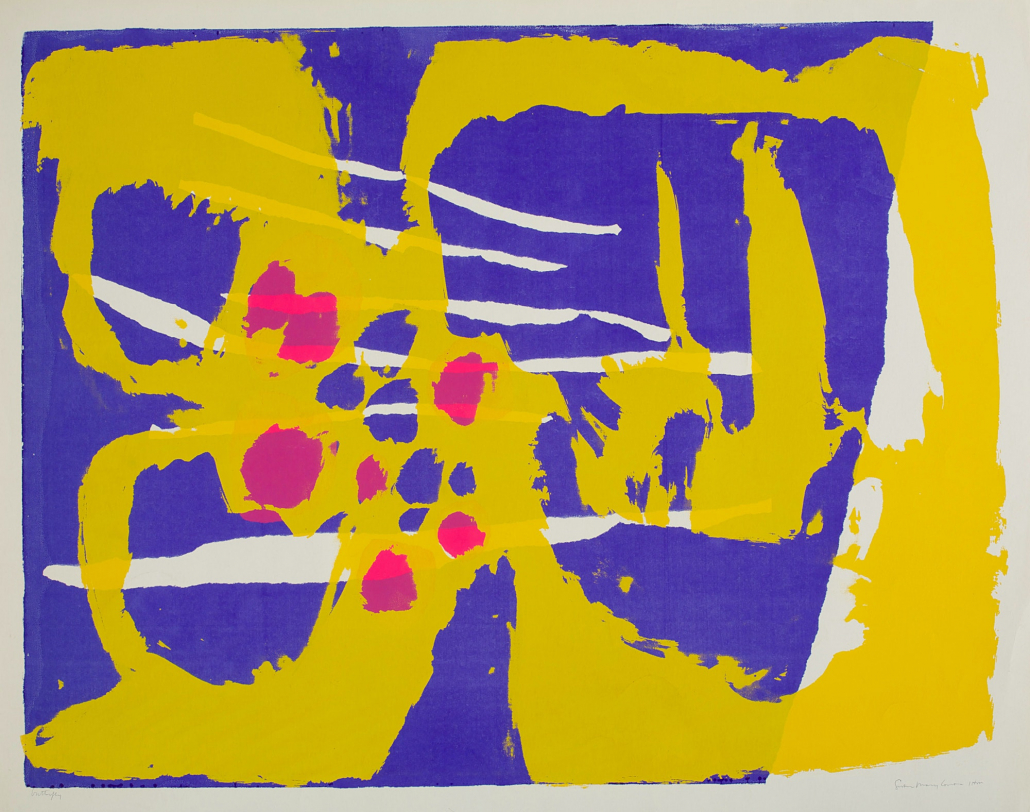Corita Kent, ‘Butterfly’, 1962.
‘Three crucial questions’
Andrew Collis
Epiphany 6, Year C
Luke 6:12-26
I realise, again, my love for Sr Corita Kent (1918-1986), whose artworks embody so wonderfully/colourfully an orthodox faith – what we might call, after Catherine Keller, and in recognition of orthodoxy’s depth (diverse gifts and vocations), “polydoxy”.
Sr Corita was an artist, educator and advocate for social justice.
At 18, she entered the religious order Immaculate Heart of Mary, eventually heading up the art department at Immaculate Heart College. Her work evolved from figurative and religious to incorporating advertising images and slogans, popular song lyrics, biblical verses, and literature. Throughout the 1960s, her work became increasingly political, urging viewers to consider issues of poverty, racism and injustice …
Orthodoxy (“right belief/praise”) expresses the fullness of faith (both wary of, and opposed to, certain heresies or narrow expressions – fundamentalisms). This makes sense to me in terms of three crucial questions or imperatives: poetics, ethics and metaphysics.
At its best, Christianity, like other Wisdom traditions, attends to all three.
By poetics, I mean a belief in language as constitutive of reality. Words shape us, give form to the world as we know it – become flesh. Story, commentary goes all the way down; poetry, interpretation goes all the way up …
By ethics, I mean commitment, with Jesus, alongside all the true prophets, to good news for the poor and exploited. Peace-making all the way down; peace with justice all the way up …
By metaphysics, I mean an experience of the world as sacrament – faith in a God who acts in and through the laws of physics (laws known and unknown). Spiritual materialism all the way down; as if matter really matters, all the way up …
How we do theology – our readings in theopoetics, our orthopraxis and activism, our being-for-one-another-in-the-world – concerns us wholly, makes us vulnerable and remakes us, again and again … in a properly liturgical process …
It’s all there in Corita’s artworks …
The serigraph (silk-screen) print, “Butterfly” (1962), is one I’d never seen before. What an image of faith and theology as liturgical process – call and response in a Spirit of freedom and transformation.
Other works are more typographical.
“Hope” (1965) includes the following from poet Ned O’Gorman: “The secret is to risk disaster, hope for triumph, and describe the forms of the incarnation.” Sounds like a job description for “doer/poet of the Word” (James 1:22), for gospel-writer or evangelist.
Luke the evangelist has Jesus say: “You who are poor are blessed, for the reign of God is yours … But woe to you rich, for you are now receiving your comfort in full.”
This certainly risks disaster in terms of popularity – see also verse 26: “Woe to you when all speak well of you”. Jesus’ words – like Corita’s artworks – deal in radical reversal. A world of winners and losers is turned upside down (who can be happy while others are suffering?) by way of hope and courage.
The blessings and woes introduce a sermon on the cost of discipleship – orthodoxy as adventure.
Jesus will go on to speak about ethics: loving enemies, sharing possessions, loving the unlovable, being non-judgemental and forgiving, living by the “golden rule” – leaving the conventional, the familiar, to bear a cross (to confront oppressive powers) and follow him (imitate, appropriate, repeat with a difference his loving example).
Similarly, Corita’s artwork (1966) invites us to imagine the world, to see ourselves, as if from the “other side” (the heavenly side). As if from the “underside” of history …
We read: “When was the last time you saw a miracle?” And, with greater difficulty, the text reversed out of light green, upside-down and sideways: “Green up.”
We are invited – called, provoked, nudged, inspired – into a metaphysical realm, a sacramental reign – to be witnesses to the safety of God, the goodness of God we ourselves may embody – in a kindom where justice, equality and compassion are new realities.
A properly liturgical ending, then, an open ending … and with regard to poetics, ethics, metaphysics: Let us go in peace to serve Creation in the Way of Christ … Amen.




